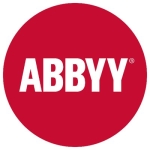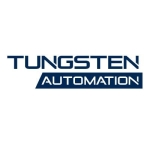What is our primary use case?
We're using it across a number of departments. So far we have implementations for finance and cost-control, as well as operational and logistics uses.
Our deployment is a hybrid solution. We have an on-premise component and some portions are in Azure.
How has it helped my organization?
We've implemented a few solutions that are helping us out in a couple of different dimensions. One of the big ones for us is cost-control. We've been able to identify certain billing errors and to dispute them or avoid overpaying in certain instances. It's helping us to improve both the visibility of the accuracy of the invoices we're receiving, as well as any instances where there might be disputed amounts. It's also allowed us, for certain tasks that have previously been repetitive or manual-data-entry heavy, to centralize and then automate them and reduce the number of actual employees we need on those mundane tasks. It's been very helpful for that.
What is most valuable?
The core functionality, the ability to automate these tasks and to interact, both with our own in-house software solutions as well as with our customers' and vendors' solutions and portals, has been incredibly valuable for us.
We're also beginning to dip our toes in the water with the IQ Bots, to do some OCR and some machine-learning. So far that is looking like it will be very valuable to us as well.
What needs improvement?
One thing about it that we have not found to be exceptionally useful are the built-in bot analytics, the Bot Insights. From our own extensive experimentation, as well as from what we've understood from other people using this solution, we've been able to come up with better solutions using our own in-house analytics and our own systems than through theirs.
Also, we're seemingly plagued with certain technological issues or bugs. In particular, at the moment, we're in the middle of a pretty serious issue that's blocking our further development. We have been working with the Automation Anywhere support team on it, but it's been dragging on for a while now and we still haven't received a solution from them yet. We're hoping to get that resolved and move forward.
There's definitely some funkiness or some jankiness, sometimes, with working with them.
For how long have I used the solution?
We've been using Automation Anywhere ( /products/automation-anywhere-aa-reviews ) for about a year now.
What do I think about the stability of the solution?
The stability has been mixed. In fairness, it's hard to say how much of that is issues with the solution itself, versus any issues that we may have had in the setup and integrating it into our own systems. It's definitely taken us a while to get to a point where we're comfortable with it being able to run consistently and smoothly. We've made a lot of progress in that regard and we're seeing a lot of improvements as well.
Our issues tend to be more on the development side. We've had pretty decent success once the solutions are fully developed and deployed, as far as stability is concerned. But, we have definitely encountered a lot of issues and hiccups along the road, while developing.
What do I think about the scalability of the solution?
It seems pretty scalable. We're looking into scaling up in the near term. The pool seems pretty scalable and good to us from what we've seen so far.
We currently have six or seven processes that we've automated using Automation Anywhere and we're looking to increase that number quite a lot here in the U.S. We have a prioritized list of another 50 or so tasks that we'd like to try to automate with the solution. In addition, we're working to generate interest among some of our other agencies and countries worldwide, in using it.
How are customer service and technical support?
Their technical support is good. Any issues that we've raised, they've gotten right back to us and helped come up with solutions. It has taken longer than we would have liked for some of our thornier problems to reach a resolution. At the moment we're a little stuck, based on a problem that we're having, although tech support has been responsive and has worked closely with us to try to come up with a solution.
Which solution did I use previously and why did I switch?
This is the first RPA solution that we have used.
How was the initial setup?
The initial setup was definitely complex. It took us and our IT teams quite some time to get everything set up the way we needed it, with our three environments. Part of that was getting the Control Room installed and set up, as well as making sure that the client was running properly on all of our machines. It definitely took us some time to get that all running smoothly, a few months to get everything deployed.
We're a global company and our U.S. offices have been running this as a pilot for global. We've been sitting with different departments and stakeholders to try and understand what processes might be right for automation and for this kind of solution. We've been compiling that list, prioritizing, and trying to get the buy-in of the people who will be most impacted by it. We've also been trying to get some early, big wins as far as ROI is concerned, and as far as demonstrating the value of the technology, so that we can continue to roll out more, here in the U.S. and, hopefully, more broadly later on.
What about the implementation team?
It has all been done in-house.
What was our ROI?
We are definitely seeing positive ROI on this, between some cost reductions as well as some FTE replacement for the more repetitive or mundane tasks.
What's my experience with pricing, setup cost, and licensing?
Licensing is done on a yearly basis. There are some additional costs beyond the standard licensing fees. There are a couple of add-ons we've looked at: The IQ Bot for OCR and machine-learning were add-ons, as well as the Bot Insights - the analytics.
We got The Bot Insights rolled in immediately, on a trial basis. The Meta Bots, if not immediately, we had added on very early on. The IQ Bot is something that we've been looking into recently. We have not yet purchased that license. We have run a PoC with it and are looking into adding that on.
Which other solutions did I evaluate?
We did evaluate other options but I wasn't directly involved in the initial screening process. I do know that we examined three or four other solutions before settling on Automation Anywhere.
What other advice do I have?
The biggest lesson I've learned from using this solution is that nothing is as easy as it seems it should be.
One of the things a number of people are looking for out of an automation solution is a reduction in FTEs. I know Automation Anywhere would prefer we not describe its usefulness in those terms, but I know that's something that a lot of people are into. While it certainly can achieve that, the estimates going in tend to be very high and the reality is that you're not really hitting those numbers. So be very conservative when you evaluate it. It has absolutely been worth it for us and has provided us with good value. But the optimism going in - and I've heard this from other people we've met at the Imagine events, etc. - is over-optimistic and the actual numbers are less than what is estimated. Being realistic about that is very important.
Also, if you're using any kind of custom, in-house software, seeing how it interacts with that is important. It can be a little persnickety about interacting correctly, especially if it's an older, legacy system. It runs very smoothly across many different types of software and modern interfaces. But it can be a little challenging working with something that's a little older or more specialized and customized.
Currently, we have five to ten users, ranging from very much involved to just being onboard or peripherally involved. We have a number of developers directly using the technology, as well as project managers. Those are the people who are directly involved. The number is much larger if you include the business users who are impacted by the solution, impacted by the bots that we've created and their results. I would estimate, roughly, 50 users are benefiting from it right now.
In terms of deployment and maintenance, we're getting back to that five to ten people. We have four or five developers who are developing new bots. We have three IT people who are involved very directly in maintaining our servers and the virtual machines that we're running these on, as well as providing technical support for the overall infrastructure and setup. Those are the people who are directly involved at the nuts-and-bolts level.
It's been very helpful. In many ways it's doing what it says it can do. It's automating processes, it's got some good settings for controlling, running, monitoring, and maintaining that. On the other hand, our experience in actually developing with it and making the bots has been rockier than we would like. Also, the setup - getting the infrastructure and the installs set up properly - and updating, when updates roll out, are a bit complex.
Disclosure: PeerSpot contacted the reviewer to collect the review and to validate authenticity. The reviewer was referred by the vendor, but the review is not subject to editing or approval by the vendor.

















